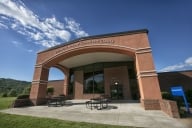You have /5 articles left.
Sign up for a free account or log in.
WASHINGTON -- A little-noticed provision in the Higher Education Opportunity Act may end up reshaping how the federal government measures the success of community colleges and other institutions that award two-year degrees.
The U.S. Department of Education’s 14-member Committee on Measures of Student Success, mandated by the 2008 legislation that extended the Higher Education Act of 1965, convened here Wednesday for the first in a series of meetings intended to produce recommendations to Education Secretary Arne Duncan on whether and how to revise the data that the department collects on graduation and completion rates.
At Wednesday’s session, held in the same Education Department conference room where negotiated rule making panels meet to hash out changes to federal regulations, there was a prevailing sense that the question the group will be spending much of the next 18 months trying to figure out how to change the department’s measures of student success.
Supporters and critics of community colleges alike question the merits of the primary success metric currently produced by the Integrated Postsecondary Education Data System: the "federal graduation rate," the completion rate for first-time, full-time students who earn credentials within 150 percent (recently changed to 200 percent) of the generally accepted amount of time it takes to complete. (In other words, four years for a two-year degree, and eight years for a four-year degree.)
Supporters say the current data don't reflect the good work the colleges do, failing to account for the many students who transfer to four-year institutions without degrees, and the many students who come to the institutions for something less than a degree -- a certificate, or even just some retraining -- and get what they wanted. Critics argue that better data would simply provide clearer evidence that community colleges are failing in their mission, reinforcing what are terribly low completion rates at some institutions.
While the National Governors Association and the American Association of Community Colleges have both proposed voluntary accountability systems that aim to measure student success across many variables, this federal committee’s work has the potential to lead to the adoption of new federal requirements. The same HEOA provision that called for the creation of the committee gives the education secretary the authority to promulgate “additional or alternative measures of student success” for institutions that award two-year degrees, based on the group’s recommendations or, it appears, based on his own prerogatives.
“It makes a difference when the federal government takes information, gathers it and publishes it,” said Kevin Carey, policy director at the nonpartisan think tank Education Sector and one of several higher education researchers on the panel. “That data has more effect and more meaning than data that comes from other sources.” The panel, he said, ought to “bring more crucial information into that fold of federal endorsement.”
Also on the panel: a handful of presidents and chancellors from community colleges and four-year institutions that take in large numbers of transfers from two-year institutions; Belle Wheelan, president of the Southern Association of Colleges and Schools’ Commission on Colleges; and Harold O. Levy, former chancellor of New York City Public Schools, who is now a managing director at Palm Ventures, LLC, an investment firm with stakes in several privately held for-profit colleges. In all, it is a group with sympathies that likely align closely with the Obama administration's favorable view of community colleges -- making for a notable contrast with the tough regulatory stance the administration has taken against for-profit colleges.
Community colleges “are institutions that have a very complex mission,” Eduardo M. Ochoa, assistant secretary for postsecondary education, said at the start of the meeting. “They have to be all things to all people” as institutions that offer remediation, degrees and certificates, job training, the possibility of transfer to four-year colleges and universities, and continuing education.
But the data that two-year institutions are required to report don’t measure all those missions, Ochoa suggested. “It’s important to have metrics that actually and accurately gauge how these institutions are progressing in terms of meeting their multiple objectives and also prioritizing them appropriately.”
Ochoa’s comments were echoed in the dominant view expressed by panelists: that the data two-year institutions report to the Education Department do not accurately represent the work these institutions are doing.
Graduation rates are “a type of information which at this point doesn’t lead to a productive conversation,” said Thomas Bailey, the committee’s chair, who is director of the Community College Research Center at Teachers College of Columbia University. Conversations, he said, always revert to the “the usual criticisms of the IPEDS data” -- that they do not take into account students who need substantial remediation, enroll part-time, have earned prior college credits, transfer or who never intended to do more than take a few classes, among other cohorts.
Wayne Burton, president of North Shore Community College, in Massachusetts, said that institutions like his would benefit from student success measures that reach beyond the graduation rates. “We need to recognize … that we are successful, very successful, yet the public thinks we aren’t because they see the federal metric,” he said. More accurate measures, he implied, would show that community colleges are already fulfilling their missions. “Community colleges in this country do not need to be fixed; they need to be famous.”
Because this meeting was just the first of many, and included presentations on the efforts under way by the NGA and AACC, the committee’s direction for the future seemed a bit uncertain. Bailey, a widely respected researcher, said he would like to see the committee figure out good ways to measure progression, learning outcomes, and employment for students who enroll at two-year institutions.
Employment came up again as a potential way to measure student success when Kent Phillippe, associate vice president of research and student success at AACC, discussed his group's Voluntary Framework of Accountability, which would attempt to track in-field employment of former students.
To Levy, the sole panelist with a direct link to for-profit colleges, the suggestion that one measure might be related to employment -- particularly in relation to AACC’s framework -- evoked an elephant in the room.
“For obvious reasons I’m thinking, how does this map against gainful employment," he said, referring to the department's proposed regulations that link students' ability to repay their debt to a program's eligibility to participate in the Title IV federal financial aid program. Those rules, which were set to be released by Nov. 1 but have in part been delayed, would apply to most for-profit programs and nondegree programs at community colleges and other nonprofit institutions, but by most accounts would have a much more detrimental impact on for-profit colleges because of their graduates' larger loan burdens.
Phillippe's response: “We were aware of gainful employment, but this was the community college community trying to find measures that they think are the right measures for themselves.” Whether that view will be adopted by the committee and, ultimately, by the Education Department is a matter many months -- and many battles -- away from resolution.







